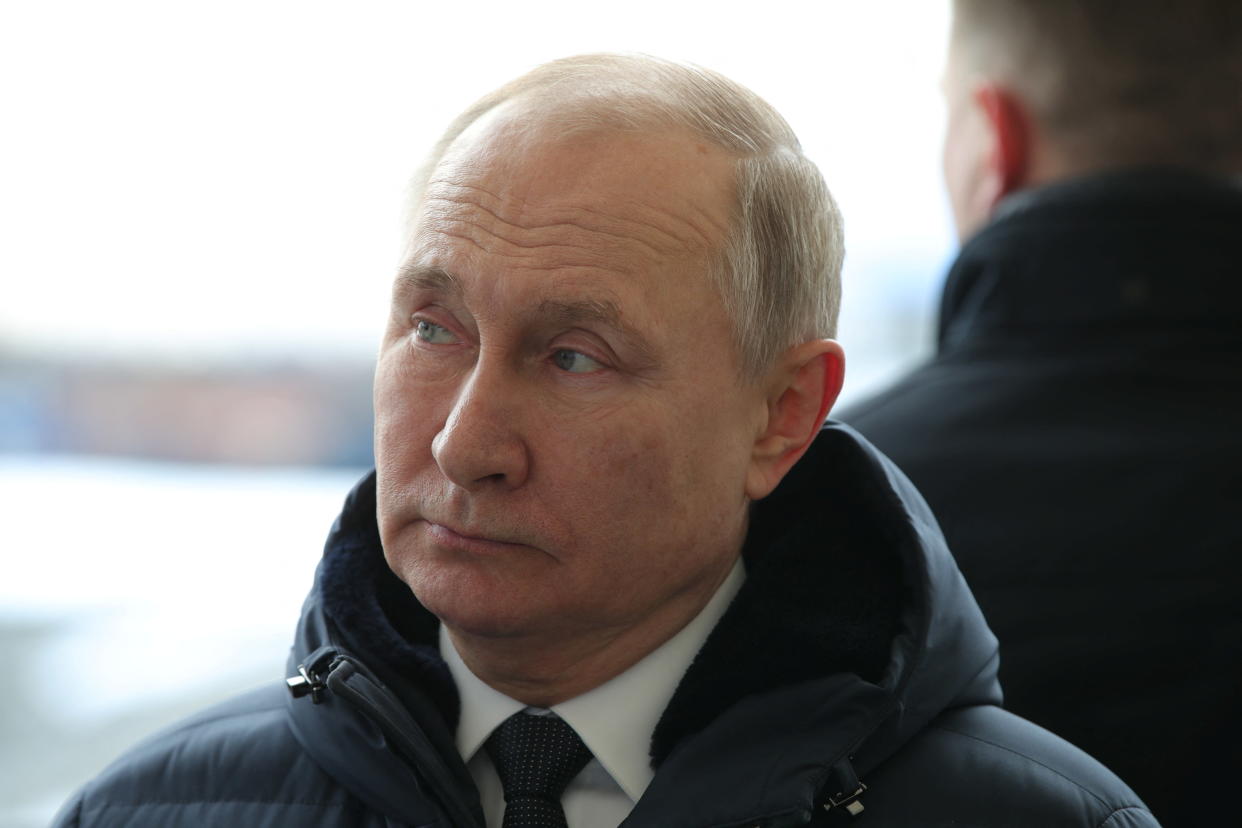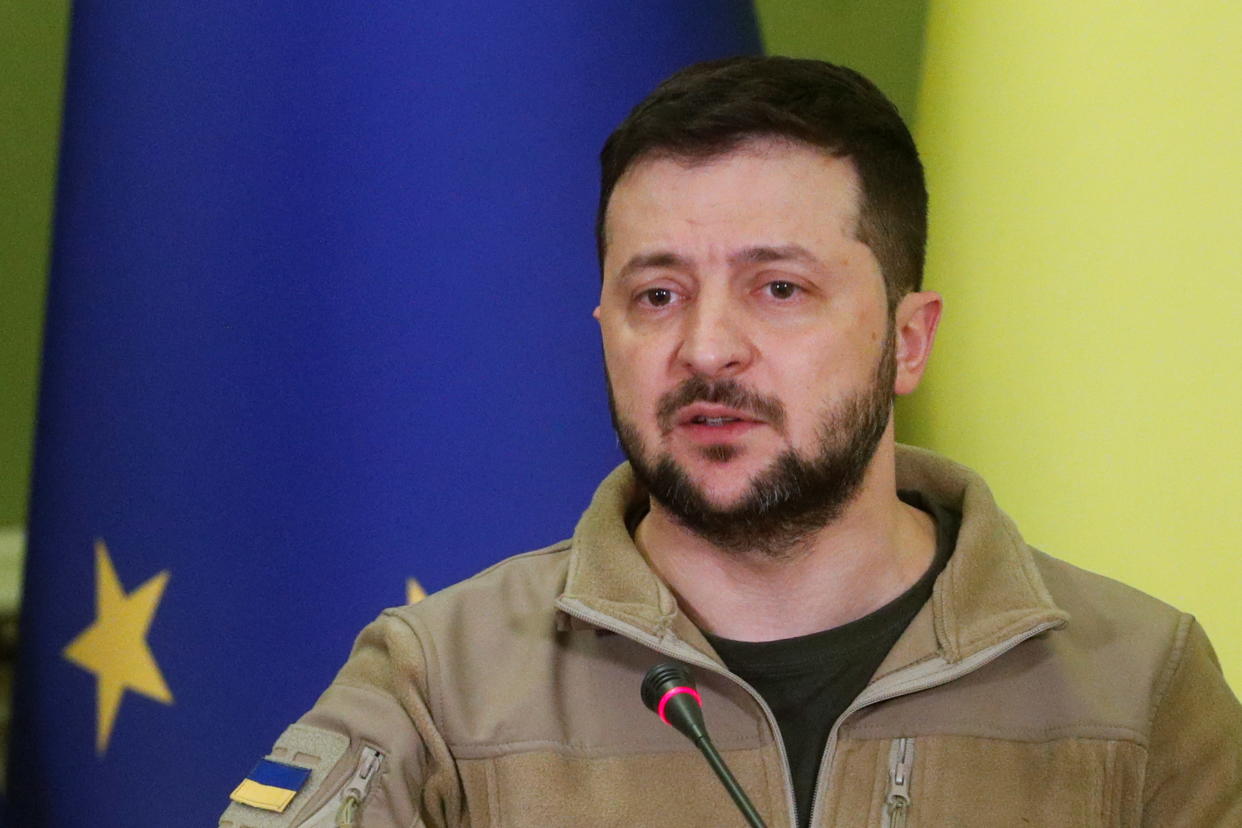He might secretly be the world’s richest person, but Russian President Vladimir Putin is also the world’s greatest value destroyer.
The International Monetary Fund estimates that Putin’s barbaric invasion of Ukraine will lower world economic growth by eight-tenths of a percentage point this year and two-tenths next year. That might not sound like a lot, but given the size of the world economy, it amounts to about $935 billion in lost output, roughly equivalent to zeroing out the entire economy of Turkey or the Netherlands. The toll could easily top $1 trillion if the war drags on or escalates.
This is the destruction caused by one man demanding the ruination of a large, peaceful and productive country. It’s not an unstoppable virus, a complex financial contagion or an unforeseen natural disaster. The cost of Putin’s fanaticism is obviously acute in Ukraine, which is suffering thousands of deaths and hundreds of billions of dollars of damage to civilian infrastructure. But Putin’s war is raising the cost of fuel, grain and other vital products literally everywhere. It will cost lives and lower living standards in dozens of nations nowhere near the battlefields.
Financial markets have adjusted to Putin’s mayhem, which is both good and bad. It’s good because a resilient global economy lumbers forward. Sanctions on Russia have forced workarounds in the markets for oil, natural gas, and other Russian minerals and products that are now in limited supply or wholly unavailable. Five million Ukrainian refugees in Europe and elsewhere — many displaced by Putin deliberately — are straining relief systems. The risk of a broader war between Putin and the NATO alliance is real and terrifying. Yet markets are patching themselves up and a Putin recession seems unlikely.
[Follow Rick Newman on Twitter, sign up for his newsletter or send in your thoughts.]
It's bad because functional markets may relegate Russia’s violent crusade to background noise and blunt the urgency for all nations that seek prosperity to defeat Putin, now. The United States and many nations in Europe and elsewhere have hit Russia with tough sanctions that will hinder its military power, over time. But those sanctions could go further, and they haven’t mainly because some European leaders feel they can’t shut off Russian energy imports without damaging their own economies too much. Some Western nations also fear that giving Ukraine advanced weaponry, such as tanks and fighter jets, might lead Putin to strike back directly at the donor countries.
Yet the West is now at a point where it can bear the risk and cost of confronting Putin, or face him down later at multiples of the present cost.
The time is ripe to beat Putin
There may never be a better opportunity to defang Putin. Russian forces spectacularly failed to capture Ukraine’s capital, Kyiv, and impose a puppet government. They retreated from central Ukraine in disarray, exposing vast holes in a military looted from top to bottom, like the entire Russian economy. Old, neglected equipment broke down routinely. Undisciplined troops employed lazy tactics. Broken supply lines left units short of food and fuel. Intercepted phone calls revealed panicked Russian conscripts desperate to escape and, in some cases, refusing to fight. In southern Ukraine, coastal defense troops sank the Russian navy’s Black Sea flagship, the Moskva, destroying a $750 million fighting platform with two missiles costing perhaps a couple million dollars. Putin’s military may be more vulnerable than at any time during his two-decade rule.
Despite that, Russian forces now seem to be launching a new campaign to carve off as much of eastern and southern Ukraine as they can get. At some point, Putin may seek a “peace” settlement that leaves Russia in control of whatever territory it can take and keep.
There can be no peace with Putin. The Ukraine invasion is at least Putin’s fourth attempt in 15 years to take neighboring territory with force and kluge together some remnants of the old USSR. Putin’s territorial gains to date would seal off Ukraine’s access to ports on the Sea of Azov, and he probably aims to capture Ukraine’s Black Sea coastline as well, leaving it no seaports to the outside world. If Putin could accomplish that, he would have military force on the border of tiny Moldova, where he also has territorial ambitions. Moldova isn’t a NATO member, but it borders Romania, which is.
Russian missile strikes deep into western Ukraine, just miles from the border with NATO-member Poland, show Putin is willing to cut it close and risk an errant attack on a NATO member, which would oblige the alliance to respond. Nobody should assume Putin would stop in Ukraine, if the war ends with Russian territorial gains. He’d continue to claw for turf and military advantage. China’s communist rulers, meanwhile, are watching closely, to see if democratic powers have the mettle and attention span to stop the sort of aggression they may someday attempt in Taiwan or other parts of Asia.
The Western goal at this point should be a complete Ukrainian victory, with all Russian forces out of the country. Leave Putin in power in Russia; regime change is a reckless goal. NATO shouldn’t send troops, but Western nations should supply everything short of that and maximize the economic pressure on Russia, to end Putin’s medieval adventurism once and for all.
On April 19, a Stanford University working group published a list of several dozen specific recommendations for cutting off the cash Putin uses to fund his military. The ultimate goal should be a complete ban on Russian oil, coal and natural gas products, Russia’s main source of capital. Since that would be difficult for some nations to do quickly, interim measures could include tariffs on Russian energy products that would force Russia to cut the underlying price to remain competitive, reducing the proceeds going back to Russia. Importing nations could also require energy payments be held in escrow accounts until the Ukraine war ends. The Stanford group also calls for designating Russia as a state sponsor of terrorism, which would trigger other types of sanctions.
As for military aid, Eliot Cohen of the Johns Hopkins School of Advanced International Studies argues that the United States should boost the value of materiel support for Ukraine from several billion dollars to tens of billions, and include heavy weapons that could be decisive on the battlefield, such as tanks and artillery. The Biden administration is moving in that direction, but Cohen, writing in the Atlantic, says the pivot is too slow, given that “decisive action is urgently required to tip the balance between a costly success and a calamity.”
The fastest way to help Ukrainian forces is with more Soviet-style equipment they already know how to use. Most of this would have to come from eastern and central European nations such as Poland, Lithuania and the Czech Republic, which are already sending some such weapons. The U.S. role is to facilitate delivery and help these nations backfill donated equipment with newer systems, covertly if necessary. Western defense contractors surely won’t object.
Every path involves risk. If Europe and the United States put everything they have into ejecting Russian forces from Ukraine, Putin could lash out with chemical or biological attacks or even a nuclear strike of some kind. But if he succeeds even partially in Ukraine, he could do the same thing later, when he’s closer to NATO borders. Tighter limits on Russian energy imports would be tough on European nations such as Germany and Italy that can’t readily replace the energy. But better to do it on their own terms now, than to let Putin dictate the terms later. Nobody wants to bear the cost of Putin’s war, but there will always be another Putin war and the cost will only go up.
Rick Newman is the author of four books, including "Rebounders: How Winners Pivot from Setback to Success.” Follow him on Twitter: @rickjnewman. You can also send confidential tips.
Read the latest financial and business news from Yahoo Finance
Follow Yahoo Finance on Twitter, Instagram, YouTube, Facebook, Flipboard, and LinkedIn
Source: Read Full Article



